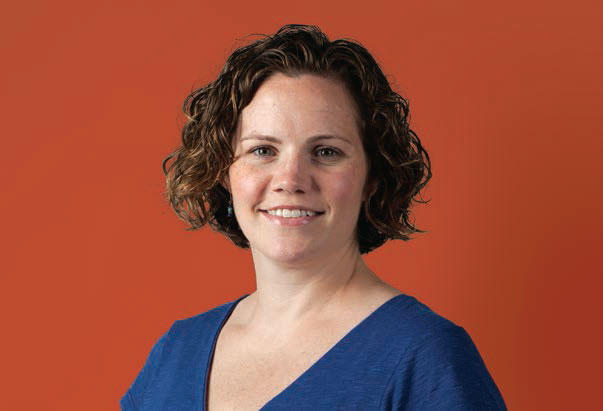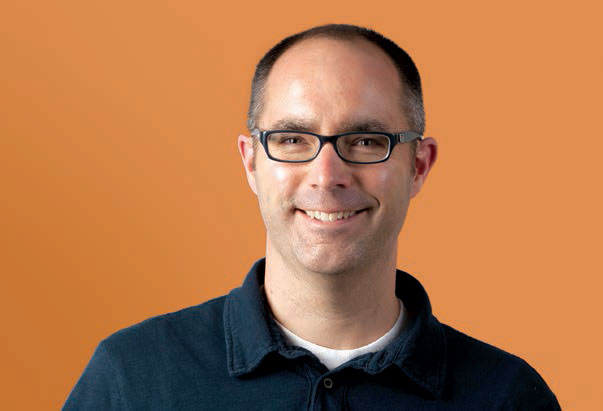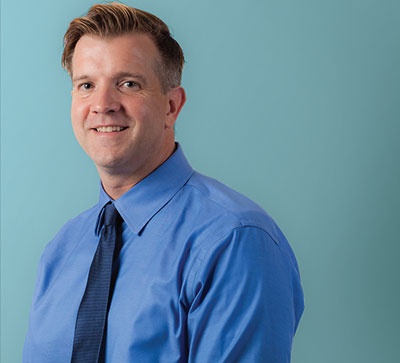Happiness 2.0

Let’s face it. Many of us in science and medicine just aren’t happy. Funding is scarce. Work-life balance is an oxymoron. And everyone expects us to do more with less.
While the dissatisfaction hangs over every discipline, there’s no doubt that physicians are at ground zero. Sharp commentaries such as, “How Being a Doctor Became the Most Miserable Profession,” by Daniela Drake, M.D., paint a grim picture of what it’s like to be a physician, in her words “a humiliating undertaking.” On KevinMD, Pamela Wible, M.D., examines a time when she was plagued by suicidal thoughts. The reason? “Bureaucrats and middlemen had inserted themselves between me and my patients and sucked the joy right out of my career.” These aren’t just isolated rants. A growing number of studies point to widespread pessimism: Roughly seven out of 10 physicians said they would not recommend the profession to others. More than half of physicians said they are planning to retire early or scale back practice hours.
Unhappy as they may be, physicians do not have the corner on dissatisfaction. Basic and translational scientists don’t appear much cheerier. The pressure to publish, acquire funding with increased competition for fewer grants, and balance the demands of work and personal life make being a scientist challenging. If you’re one of the lucky ones, and you get tenure, the first moment of real security comes at around age 45.
HOW ACADEMIC MEDICINE LOST ITS MOJO
For a good majority of people who trained in a different era, health care reform can feel like bait-and-switch. They played by the rules. Powered through years, even decades, of rigorous education and training. Sleepless nights. Difficult bosses. Challenging cases. Heartbreaking losses. And now? The rules of engagement are changing constantly. “Sometimes it can feel like we’re rafting down a river with constant rapids,” says Michael Magill, M.D., chair of family and preventive medicine. “We keep waiting for the flat water, but it never comes. It’s all white water.”
Continuous uncertainty and change hurts morale in any situation. “But health care transformation isn’t just change,” says cognitive psychologist Charlene Weir, Ph.D., R.N. “It feels like a vise grip over people’s time and decisions.” To be motivated, Weir says, people need to feel a sense of control – the one thing physicians feel is missing now. Almost universally, University of Utah providers would like more input, with only 58 percent reporting they feel like they have the ability to influence things that affect their practice.
This loss of autonomy and lack of influence, pressure to work more efficiently and generate more revenue – not to mention the transition to the simultaneously celebrated and maligned EHR – leaves many providers feeling like mere cogs in the assembly line of medicine. Paradoxically, those who perform the best financially often end up feeling the most pressure. “If you’re a big rainmaker in the system, there’s a huge incentive to keep you busy clinically,” says William Couldwell, M.D., Ph.D., chair of neurosurgery. “We attract superb people and then hook them to a plow.” The emphasis on minute-by-minute productivity, Couldwell notes, leaves little time for big-picture thinking and transformative research projects, which is what attracted many to choose academic medicine over private practice.
Sam Finlayson, M.D., M.P.H., chair of surgery, agrees. “We really can’t run any faster or work any harder. We need to get people off the hamster wheel and engage them in creating a system that allows them to practice at the top of their license.”
Moreover, a stressful, frustrating environment naturally breeds angry and disrespectful behavior, which almost always flows downhill. Ninety-eight percent of nurses say they’ve experienced or witnessed rude and abusive behavior on the job, according to an ACHE survey. No one can blame someone for avoiding a testy manager or a difficult attending, but silence comes at a price. Lack of communication is the No. 1 cause for medication errors, delays in treatment and surgeries at the wrong site, and it’s the second-leading cause of operative mishaps, postoperative events and fatal falls.
“Our profession has traditionally done a really poor job of supporting all faculty members as they balance the multiple missions of the academic health center with their personal lives. This is especially true for women faculty members,” says Carrie Byington, M.D., associate vice president for faculty and academic affairs. Only half of women are happy with their work-life integration, according to a survey by the Association for Women in Science, and many are reconsidering their professional choices or dropping out altogether. “Faced with the prospect of 15-20 years of training and relatively poor payment, it’s no surprise that so few women are entering academic health care,” says Byington, who has spent much of her career creating a mentoring program that helps support junior faculty. “There’s a lot of talk about value in health care right now, but value has many meanings,” says Byington. “One of the things we need to learn to do better is to value people.”
HEALING OURSELVES AND SAVING THE SYSTEM
But really, aren’t all Americans a little unhappy with their jobs and, by the way, getting paid a lot less than most in science and medicine? The answer is yes. But we’re also not relying on them to make lifesaving discoveries and treatments that can maintain and restore our health. Creating a fully engaged and satisfied workforce may prove to be more important – and more challenging – than bending the cost curve. But what’s the solution? How do we keep people in academic health care motivated, focused and happy at work?
For starters, we need to reconsider our thinking about motivation. While conventional wisdom tells us that money is a key motivator, research on the subject overwhelmingly points to much deeper human needs: a desire to feel in control of our lives, to continually learn and grow and to find a larger sense of purpose in what we do. “Human beings have an innate inner drive to be autonomous, self-determined and connected to one another,” says author Daniel Pink. “When that drive is liberated, people achieve more.”
Duke University behavioral economist Dan Ariely puts it this way: “We tend to think that people are like rats in a maze, that if we give them money we can direct how they work.” But, he explains, people are really more like mountaineers. We care about reaching the peak – and the challenge of the journey. We care about creating those moments when we’re in the zone, when other worries disappear, when we’re able to find our flow state. “Creating a thriving workplace is going to require institutional culture change,” says Senior Vice President Vivian S. Lee, M.D., Ph.D., M.B.A. She acknowledges that the pressure health organizations feel to act quickly in the face of reform means leaders often don’t slow down enough to talk about changes with their teams. “We’re not always communicating our view from 10,000 feet,” she explains. “When we mandate change without providing meaning or context, it’s dispiriting rather than inspiring.”
To create more flow and satisfaction within a large academic medical setting, aligning around a central mission is key. “If we can get it right, our culture will be structured, yet it will also feel intuitive,” says Lee. A change in mission can signal a subtle but important shift. “Our mission in medicine has been to treat disease,” says Finlayson. “But if we shift that mission to advancing health, then our perspective, our priorities and how we engage completely changes.” Our job is to create circumstances around change that are attractive. “When physicians begin to see how improvements don’t get in the way of taking care of patients, but rather make their professional lives flow more easily, they’ll be on board.”
One thing is certain: the dominant culture of medicine does not respond well to command and control. “Change can’t be top down,” says Sean Mulvihill, M.D., CEO of the University of Utah Medical Group and associate vice president for clinical affairs. Mulvihill’s non-prescriptive approach has focused on traveling around to division and department meetings, outlining the challenges, suggesting different approaches for addressing them, and then listening. “Physicians are in the best position to really direct meaningful change in the system,” says Mulvihill. “They just need to let go of the fear that they will somehow come out worse.”
Monica Vetter, Ph.D., chair of neurobiology and anatomy, believes we need to present changes as opportunities, not mandates. Vetter was recently asked to uproot her entire department from their recently remodeled lab space as part of a campus expansion plan. The move would be disruptive and the new lab space would be more densely populated, but the opportunity she presented was that researchers would be co-located more thematically. Instead of announcing the move via an email, Vetter met with each faculty member (she went to their offices), listened to their concerns and explained how she thought the new space would create a central hub for collaboration with better access to shared resources, graduate students and colleagues. “It took us several months to work through the process, but I was surprised at the sense of optimism,” she says. “People really appreciate the opportunity to be a part of creating something larger.”
Feedback helps everybody work with a shared sense of purpose and, ultimately, it’s this sense of purpose that drives lasting career satisfaction. The feedback needs to be based on metrics and data that people trust. “When you create metrics you feel are valuable and then have data that shows you’ve moved the needle, that’s gratifying and a morale boost,” says Finlayson, whose faculty are working on more than 50 quality improvement projects. “Without data it’s just cheerleading. And if the feedback comes three months later, it’s not helpful.” Allowing people to define how they want to measure patient care can be powerful. When an interdisciplinary group in orthopedic surgery created a care pathway for joint replacement, they identified their own version of “Perfect Care,” based on the best practices and metrics they felt were most important. “We crave opportunities to think creatively and strategically,” says Chrissy Daniels, M.S., director of strategic initiatives at University of Utah Hospitals and Clinics. “People are happiest when they can influence decisions, function as a team, are treated with respect and know they matter.”
BRINGING HAPPY BACK
It’s hard to argue that many of the changes in medicine aren’t for the better. Outspoken health care reformer Eric Topol, M.D., believes the patriarchal “priesthood of medicine” has far outlived its usefulness. A new generation of doctors are starting their careers with eyes wide open, excited by the prospect of creating a Platinum Age of Medicine propelled by health care reform. “I’m optimistic because I see so much enthusiasm among students, residents and fellows,” says Brad Poss, M.D., associate dean of Graduate Medical Education. “They think about the system, population management, and team-based care, and they have all kinds of ideas about how they’d like to improve them.”
The goal, as Lee sees it, is to create an environment that balances independent thought and creative discovery with system-based thinking and team science, so that everyone feels inspired to engage. While we’re far from reaching our institutional flow state, we believe we’re starting to ask the right questions. “We’re all facing these issues, and my hope is that we can work together to find solutions that transcend our individual organizations,” says Lee. “The only way our patients are going to receive the exceptional care they deserve is if we figure out how to create the kind of meaningful work environment that the people providing the care deserve.”









